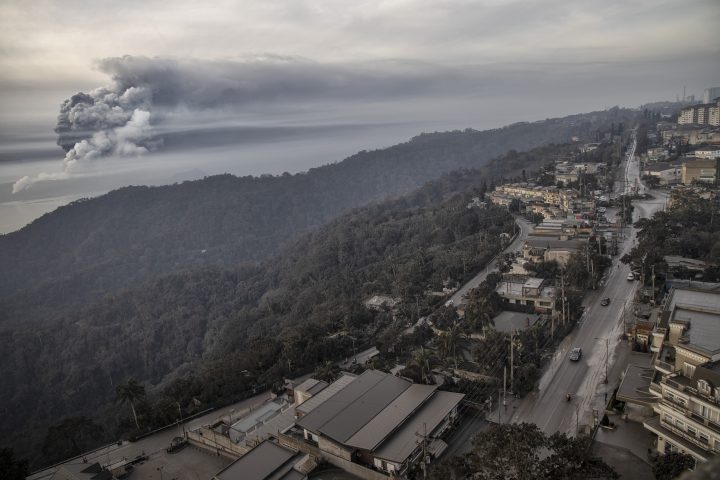Images from a volcano in the Philippines show lava being spewed into the sky while thick layers of ash cover roads and rooftops of nearby communities.

Reports of constant trembling caused by the Taal volcano on Tuesday led to warnings of a bigger and more dangerous eruption, as tens of thousands of people fled villages. Those living within 14 kilometres of the volcano — approximately 450,000 people — have been ordered to leave.
The volcano, in the middle of a lake in Batangas province south of Manila, rumbled to life Sunday in a powerful explosion that blasted a 15-kilometre column of ash, steam and rock into the sky.
The government disaster-response agency has not provided details of damage, but reports suggest dozens of houses have been ruined by heavy ash and trembling.
Clouds of volcanic ash blowing over Manila, 65 kilometres to the north, closed the country’s main airport Sunday and part of Monday until the ash fall eased.
Schools continued to be closed in a number of towns and cities, including in Manila, as officials warn of health hazards.
At least six people have been taken to a hospital in Tagaytay city in Cavite due to respiratory ailments caused by the ash, Health Secretary Francisco Duque III said.

Get breaking National news
Although Taal is one of the world’s smallest active volcanoes, it has a deadly history. It has erupted more than 30 times in the past five centuries, most recently in 1977.
An eruption in 1911 killed more than 1,300 people. A 1754 eruption lasted for months.
The Philippines lies on the “Ring of Fire,” a belt of volcanoes circling the Pacific Ocean that is also prone to earthquakes.
It’s not just the ash, trembling and possible eruptions that pose a threat to those nearby. CNN reported Wednesday that the situation brings the potential for mudslides caused by rain and ash mixing. A tsunami could also be triggered by volcanic activity.
— With files from The Associated Press and Reuters



















Comments